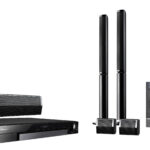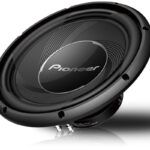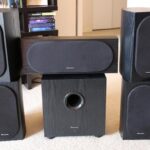An amp channel is a distinct input or output for audio signals in an amplifier. It allows for different sources or instruments to be connected and controlled separately within the same amplifier unit.
An amp channel essentially acts as an independent pathway for sound to flow through, enabling users to create multiple sound setups or combinations. It also enables the adjustment of individual settings such as volume, tone, and effects for each channel, providing versatility and customization options in audio amplification.
With multiple channels, users can connect and switch between various instruments or audio sources, enhancing their sound experience. Whether for live performances, recording studios, or home audio setups, amp channels are essential in managing and expanding sound possibilities.
The Basics Of Amp Channels
An amp channel refers to a distinct signal path within an amplifier, allowing you to shape and control your sound in different ways. It is an essential feature for any musician, as it determines the tone, volume, and character of the audio produced.
Put simply, an amp channel defines the number of separate inputs and controls available on the amplifier. Most commonly, amplifiers have two types of channels: clean and distortion. The clean channel is typically “pure” and devoid of any preamp gain, producing a clear and undistorted sound. On the other hand, the distortion channel introduces various degrees of gain and saturation, allowing for powerful and distorted tones.
There are also amplifiers with additional channels, such as overdrive, lead, or effects. Each channel has specific tonal characteristics and preamp settings that cater to different musical styles. For example, an overdrive channel may offer a mid-gain distortion suitable for blues or rock, while a lead channel may deliver a higher-gain distortion for heavier genres like metal.
Amp channels are indispensable tools for musicians seeking versatility and control over their sound. By switching between channels, you can explore a wide range of tones and effects, allowing for creative expression and tailoring your sound to different musical contexts.

Channel Controls And Features
| Channel | Purpose |
|---|---|
| Gain | Adjusts the input volume level, controlling the amount of distortion and overdrive |
| Equalizer | Allows you to shape the tone by adjusting the bass, midrange, and treble frequencies |
| Volume | Controls the overall output level of the channel |
| Presence | Enhances the high-frequency clarity and definition of the sound |
| Master Volume | Regulates the overall output level of the amplifier |
Channels on an amplifier provide different sound options and flexibility for musicians. Each channel typically includes various controls and features that allow users to customize their tone. One important control is the Gain, which adjusts the input volume level and determines the degree of distortion and overdrive. Another essential control is the Equalizer, which enables musicians to adjust the bass, midrange, and treble frequencies for tone shaping. The Volume control sets the output level of the individual channel, while the Presence control enhances the high-frequency clarity and definition of the sound. Finally, the Master Volume control regulates the overall output level of the amplifier. Understanding and utilizing these channel controls and features can greatly impact the guitar tone and overall sound.
Practical Applications Of Amp Channels
Practical Applications of Amp Channels:
Amp channels are a versatile tool for achieving a variety of sounds in different musical genres. By utilizing amp channels, musicians can explore various tonal possibilities and enhance their performances. Channels allow for seamless switching between different presets and settings, enabling quick transitions during live performances or recording sessions. For instance, guitarists can easily switch between clean and distorted tones with just a flick of a switch.
Amp channels provide the flexibility to adapt to different musical styles. In rock and metal genres, musicians can use channels to achieve high-gain distortion for powerful and aggressive tones. On the other hand, in jazz or blues genres, clean and warm tones can be achieved by utilizing a different channel setting.
Furthermore, amp channels offer musicians the opportunity to experiment with tone shaping. By adjusting EQ settings specific to each channel, musicians can create unique sounds that suit their individual playing style and preferences.
Overall, amp channels are an essential feature that empowers musicians to explore various sonic possibilities, adapt to different genres, and enhance their musical expression.
Conclusion
A channel on an amp is a dedicated input for connecting different sources and instruments, making it possible to switch between them seamlessly. Understanding the concept of channels is essential for achieving the best sound quality in amplifiers. By utilizing multiple channels, musicians and audio enthusiasts can expand their creativity and experiment with various tones and effects.
Explore the versatility of channel options to unlock new possibilities in your music journey.
Frequently Asked Questions Of What Is A Channel On An Amp
What Is A Channel On An Amp?
A channel on an amp refers to an input that allows you to connect and control a separate audio source. It is like having different audio devices connected to one amplifier. Each channel can have its own settings, such as volume and equalization, giving you more flexibility and control over your sound.
How Many Channels Should An Amp Have?
The ideal number of channels on an amp depends on your specific needs. For most home audio setups, a stereo amp with two channels is sufficient. However, if you plan on connecting multiple audio sources or speakers, opt for an amp with more channels to accommodate your setup and achieve the desired sound experience.
Can I Use Different Speakers On Each Channel Of An Amp?
Yes, you can use different speakers on each channel of an amp. Each channel allows you to connect and control a separate audio source, including different sets of speakers. This feature is particularly useful if you want to create a multi-room audio setup or have specific speakers dedicated to different frequency ranges for enhanced sound quality.
What Are The Benefits Of Multiple Channels On An Amp?
Having multiple channels on an amp provides several benefits. Firstly, it allows you to connect and control different audio sources simultaneously, giving you more flexibility in your audio setup. Additionally, each channel can have its own settings, allowing you to tailor the sound output for each source, resulting in a more personalized and optimized audio experience.








